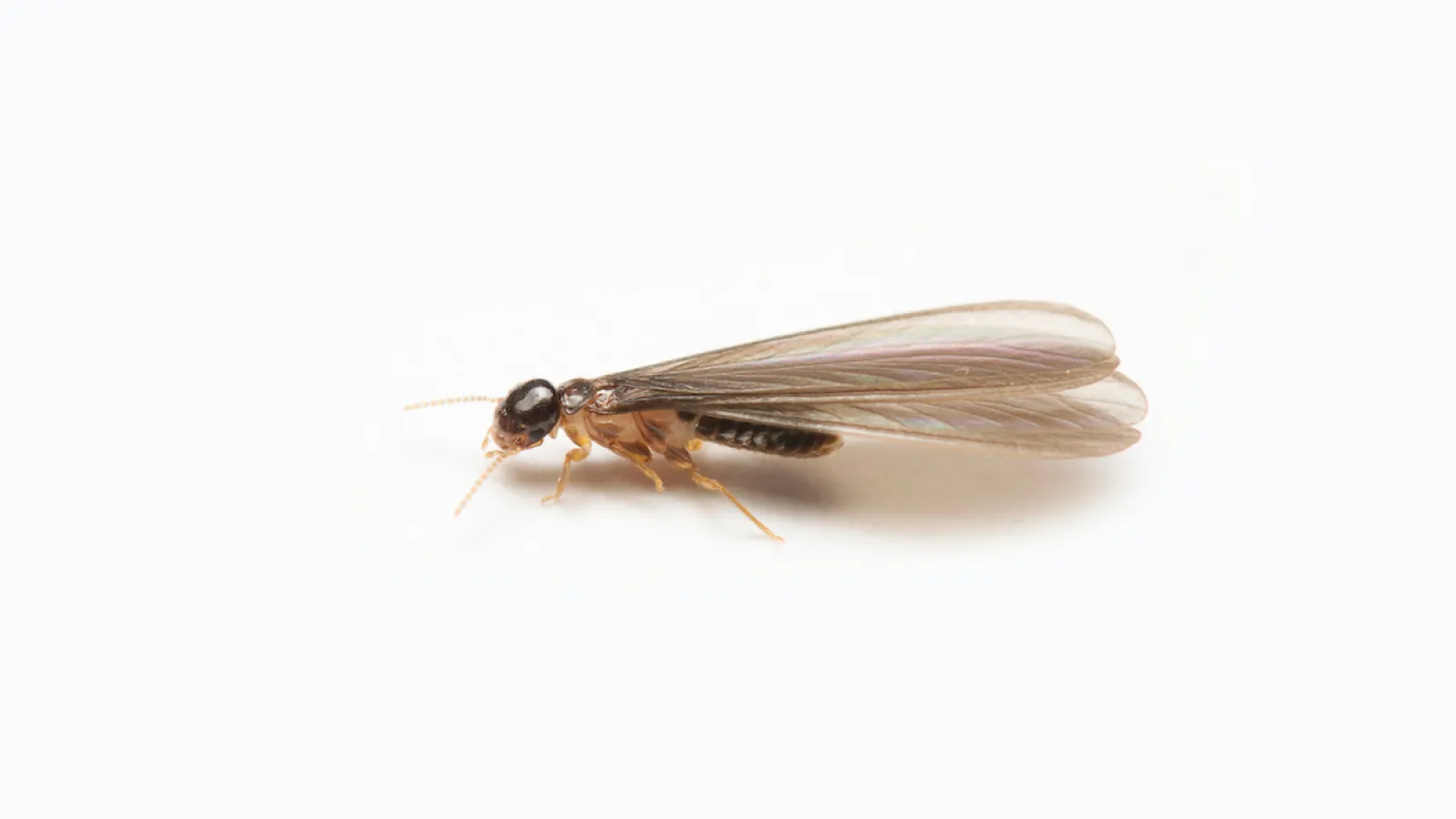
Drywood Termites
Latin Name: Cryptotermes domesticus
What Are Drywood Termites?
Drywood termites are small pests, typically no larger than ⅜ inch in size. They look similar to subterranean termites but differ in biology and behavior. Drywood termites also produce swarmers each year and are easily identified by the dark veins in their wings.
Drywood termites can get all the moisture they need from the wood they feed on and the air, so they don't need to make their nest near the soil. They will typically create a small colony inside the wood they feed on.
Are Drywood Termites Dangerous?
Drywood termites are typically found in warm, humid climates. They can cause damage to homes. However, it is usually not structural. Drywood infestations routinely damage trim and flooring and can even infest furniture. Unlike other termites, drywood termites eat across the grain of the wood, destroying both the soft springwood growth and the harder summerwood growth. If you spot a termite swarm, it is essential that you have the infestation evaluated by a trained inspector. It is not uncommon to have multiple colonies infesting your home's structure or furniture.
The National Pest Management Association (NPMA) reports that termites, in general, cause more property damage than hurricanes, lightning, and fires combined, resulting in more than 5 billion dollars worth of damage each year. If you suspect termites in your home, immediately contact the trained technicians at Palmetto Exterminators for a free termite inspection.
Drywood Termite Treatment and Prevention
Winged termite swarmers, usually brought on by warm weather and heavy rainfall, can indicate a termite infestation in your home. If you notice blistering on the surface of any wood, hexagonal, wood-colored pellets, and sawdust piles around the home, it is likely that you could have an infestation and should contact a termite control expert immediately.
To enhance your pest control provider's termite extermination efforts, close any openings that lead to crawl spaces or attics and seal any unfinished wood in the home. Keep wooden debris or clutter like firewood and lumber piles away from your home. If you suspect an infestation, a pest control specialist should be called immediately to evaluate the situation and perform a treatment to prevent further damage. Drywood termite control can be complicated to do on your own, as most homeowners lack the knowledge and experience needed to inspect and effectively treat termites. The most effective way to control a Drywood Termite infestation is to remove the wood they feed and live in. If removing the wood isn't an option, the next best solution is to closely monitor the situation and perform spot treatments on areas of activity. Some extreme infestations with multiple colonies may warrant the structure to be fumigated.
For more information on termites and termite protection from Palmetto Exterminators, see these resources:
- Termite Boosters vs Warranties: What You Need To Know
- Termite Control
- Formosan Termites
- Eastern Subterranean Termites
Similar Pests: Eastern Subterranean Termite, Formosan Termite